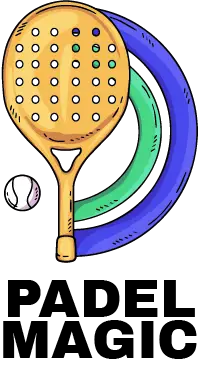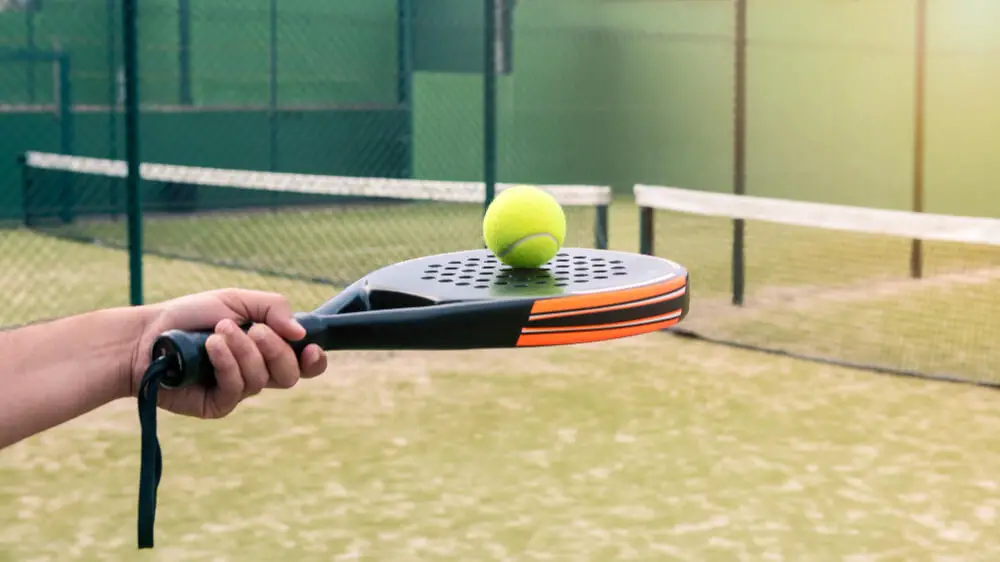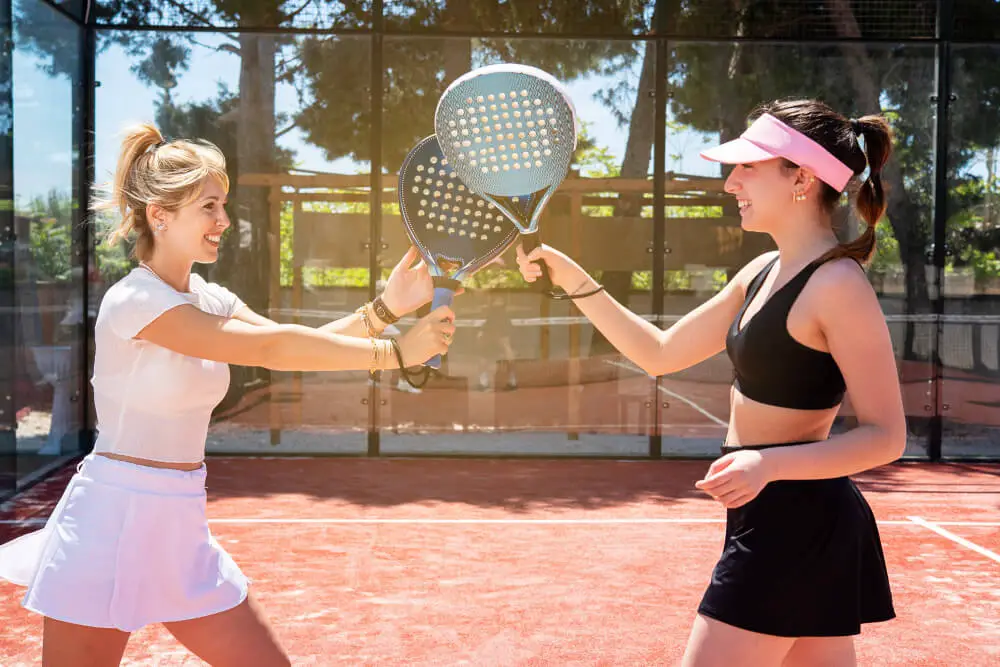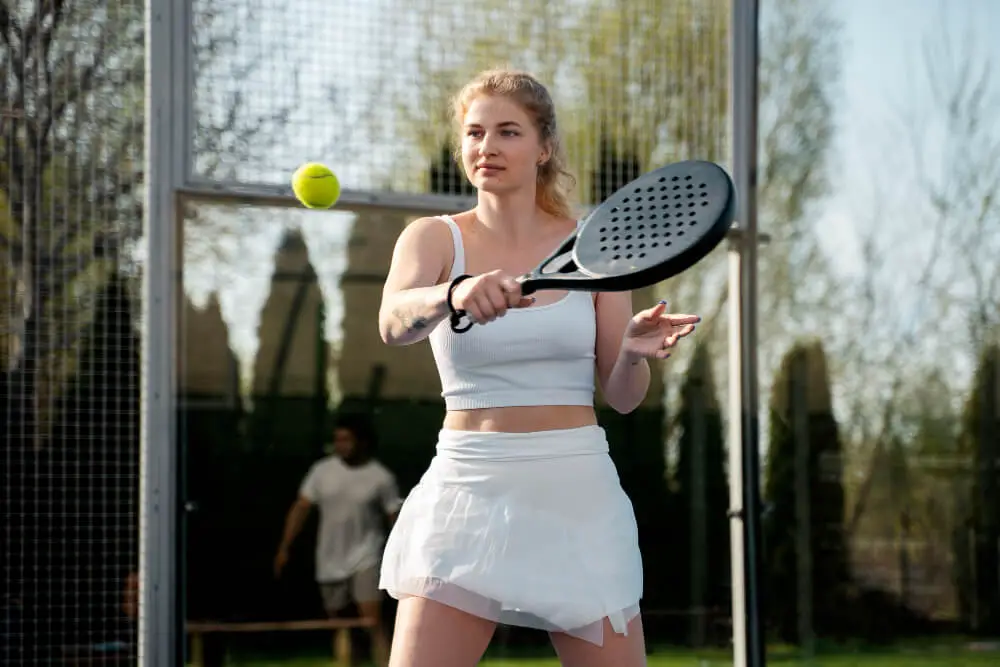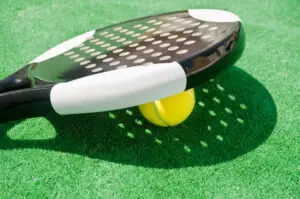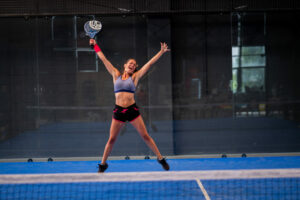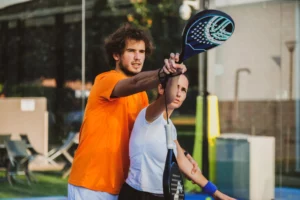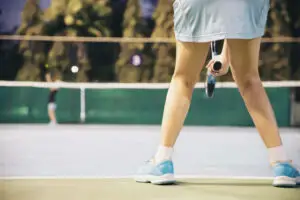For recreational or professional padel players, one of the first steps to playing this exciting and tactical game is understanding the rules for how to properly execute a serve.
The padel serve provides an important opportunity to move your opponent around and set up a favorable point – if it’s done correctly! There are many rules in place for what constitutes an ‘official’ serve that must be followed; otherwise, penalties can apply.
In this blog post, we will break down these rules so you can confidently bring your padel A-game when serving!
What is Padel Serve?
Padel serve, also known as the service in padel, is the act of hitting the padel ball to start a point in a game of padel. The serve can have a significant impact on the outcome of a match, and it’s essential to know the proper techniques and rules to gain an advantage over your opponents.
There are different types of padel serves, including the underhand serve and the overhead serve. The underhand serve is the most commonly used serve in padel, and it is executed by hitting the ball underhand and making it bounce in the opponent’s service box. The overhead serve, on the other hand, is executed by hitting the ball overhand and making it bounce in the opponent’s service box. Both serves require different techniques and strategies, and can be used to varying effect depending on the player’s style and the situation in the game.
How do you serve a ball in padel?
The first padel rule for a legal serve is that the ball must be struck with an open padel, meaning one side of the paddle should be exposed; the closed side should remain facing you until contact is made with the ball.
The serving player must stay behind the back line when performing their serve and both feet must be on the ground at all times – jumping or leaping during this action will result in an illegal serve.
Finally, once contact has been made, both players are allowed to move freely around the court.
Padel Positioning Serve
In padel, positioning during the serve is crucial as it can impact the effectiveness of the serve and the subsequent shots. The server’s partner typically takes a position at the net to receive the return, while the server moves to the back of the court to prepare for the next shot.
The server has two options for positioning during the serve: the traditional position and the V-position. In the traditional position, the server stands behind the baseline, with one foot in the service box and the other foot outside. This position provides a balanced stance for executing the serve and allows the server to cover the entire court effectively.
On the other hand, in the V-position, the server stands closer to the center of the court, with both feet inside the service box, forming a V-shape.
Padel Serve Mechanics
Padel Serve Mechanics is an important technique that should be mastered by all Padel players. Proper serve mechanics are essential for executing a legal serve and gaining an advantage over your opponents.
Basic components of the serve
When serving, it’s important to use proper techniques to ensure accuracy and power. The server must hold the padel racquet with both hands, with the dominant hand on top of the handle. The server should then bring the racquet back behind their head, keeping their eyes on the ball at all times. As they bring the racquet forward, they should transfer their weight from their back foot to their front foot, using their body’s momentum to generate power.
Techniques for grip, stance, and swing
Grip, stance, and swing are important elements of the Padel game. A proper grip ensures that the player has control over the racket and can generate the necessary power and spin for the shot. The stance of the player should be balanced and allow for quick movements in any direction. The swing should be smooth, fluid, and controlled to produce accurate shots.
For grip, the most common grip used in the padel is the continental grip, which involves holding the racket with the base knuckle of the index finger on the third bevel of the grip. Another grip used is the semi-western grip, which involves placing the base knuckle of the index finger on the second bevel of the grip. This grip allows for more topspin and control, but less power.
The stance should be balanced and allow for quick movements in any direction. The player should stand with feet shoulder-width apart and knees slightly bent. The weight should be evenly distributed on both feet, and the player should be ready to move quickly in any direction.
The swing in Padel should be smooth and controlled. The player should use a circular motion, starting with the racket behind the body and swinging it forward to make contact with the ball. The follow-through should be fluid, with the racket finishing high above the head.
Different types of serves in Padel
There are several different types of serves in Padel, including the flat serve, the slice serve, and the kick serve.
A flat serve
One of the most common serves used, and involves hitting the ball with a level swing. The padel should be held with both hands, with the dominant hand on top, and the server should bring their racquet back behind their head while keeping their eyes on the ball at all times. A flat serve has less spin than other types of serves, such as the slice serve or kick serve, but it has more power and accuracy when executed correctly.
A slice serve
The type of serve involves hitting the ball with an angled swing to create spin. This serve is usually hit with both hands on the padel racket and is typically used as a defensive move to prevent short balls or lobs that are difficult to hit. It can be difficult for beginners to master, but once you have perfected your technique, it can prove invaluable in helping you gain control of the court!
A kick serve
A serve that involves hitting the ball with a lot of topspin. This type of serve is usually hit with one hand on the paddle and is often used as an offensive move to force opponents further away from the net. The amount of spin generated will depend on how much of an angle you use when swinging your racquet; the more angle you use, the more spin will be produced.
The Serve Sequence
In Padel, The Serve Sequence is the order of steps you need to do to serve the ball.
- First, hold your paddle with both hands and bring it back behind your head.
- Then move your weight from one foot to the other as you swing forward and make contact with the ball.
- Finally, watch as it goes over the net!
The serve sequence in Padel is unique and follows specific rules and guidelines that players must adhere to. Unlike in tennis, where a player serves from behind the baseline, in padel, the server must be hit underhand and from the service box located behind the baseline. The serve sequence in padel includes two serves, and the server must alternate serving to the right and left side of the court, starting with the right side.
Serving Faults
Serving Faults in padel is when you do something wrong while serving. Serving Faults in padel can include:
- Not hitting the ball with an open paddle
- Jumping or leaping while executing the serve
- Failing to hit the ball within specific parameters for men’s games (1 to 2 meters) or women’s games (1.2 to 2.4 meters)
- Serving outside of designated serving boxes located behind the baseline.
Let Serves
A Let Serve in Padel is a type of serve that results in the ball being declared dead or ‘let’. This occurs when the server fails to hit the ball within the specific parameters set out by the rules of padel, such as hitting outside of the designated serving boxes behind the baseline or failing to hit the ball with an open paddle.
Padel Serve Strategy
Padel Serve Strategy is an important part of the game, as it can be used to gain an advantage over opponents.
One of the most effective strategies for serving in Padel is using a combination of serves to keep opponents guessing and off balance. Players should focus on mastering different types of serves, such as the flat serve, slice serve, and kick serve.
Additionally, varying the speed and spin of each serve can also be effective in catching opponents off guard and creating opportunities to score points. Another key aspect of serving strategy is knowing where to aim your serves.
Aiming for specific targets on the court can give players a strategic edge as it allows them to control their opponent’s movement and set up favorable point scenarios. It is important to practice accuracy when aiming for target areas such as corners or service boxes as any inaccuracy can result in an illegal serve or a less powerful shot that gives your opponent more time to prepare for the next shot.
Finally, a successful Padel serve strategy must take into account the opponent’s skill level and playing style. Serving against players with different styles requires adjusting your tactics accordingly.
Conclusion
Padel serve rules are an important part of the game and should be understood by all players. Proper technique is essential for executing a legal serve, as any mistake can result in a penalty stroke or even a loss of points. Knowing the different types of serves available and how to correctly execute them will give you an advantage over your opponents.
Frequently Asked Questions
An illegal serve in Padel is any serve that does not follow the rules and regulations of the game.
For example, if the server does not hit the ball with an open face if the server touches the net with their paddle or body during the serve, if the ball hits the wall or ceiling before bouncing in the service box, or if the server steps out of the service box before hitting the ball, then the serve is considered illegal.
To serve in padel, the server must stand inside the service box on their side of the court and hit the ball underhand with an open-face paddle, making sure that the ball bounces in the opponent's service box before it can be returned. The server can serve from anywhere behind the service line, but they must make sure that they do not step on or over the line before making contact with the ball.
No, a padel serve must bounce only once in the opponent's service box before it can be returned. If the ball bounces twice before the receiver hits it, the point goes to the serving team.
In Padel, the server must hit the ball below waist level and with an open-face paddle. Some players may choose to serve at hip level, but the ball must not go above the waist of the server when they hit it.
Yes, a short serve is a legal serve in Padel. However, the server must make sure that the ball bounces in the opponent's service box before it can be returned.
The serve in padel must be hit below waist level and the ball should not go above the waist of the server when they hit it.
Yes, a backhand serve is a legal serve in padel. The server can use either their forehand or backhand to hit the ball underhand with an open-face paddle.
No, topspin is not allowed in Padel serves. The server must hit the ball with an open-face paddle, which means that they should not impart any additional spin or speed to the ball using the closed side of the paddle.
No, the receiver cannot volley the serve in padel. They must wait for the ball to bounce in the service box before returning it.
